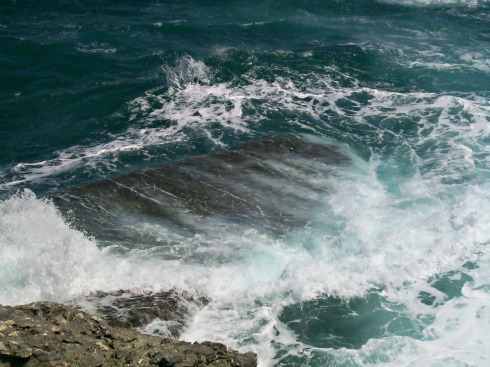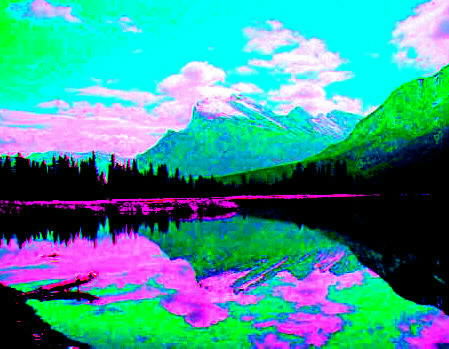- Air Homepage
- Global Warming
- Integration Meteorology and Plate Tectonics
Integration Meteorology and Plate Tectonics
What's new about integration meteorology and plate tectonics? There's gotta be a connection between meteorology and plate tectonics.
Find more about our earth.
Atmosphere and Tectonics: The Deep Link 🌐Did you know that tiny movements of the Earth's plates can change the global climate for millions of years? Find out how drifting continents and erupting volcanoes are locked in an endless cycle that shapes our air by integrating meteorology and plate tectonics.
Meteorology is the study of the Earth's atmosphere, and plate tectonics examines its lithospheric plates. These two fields of study may seem unrelated, but they're actually linked.
Meteorology and plate tectonics are linked by the determining how the atmosphere interacts with the surface of the Earth. Volcanic eruptions, for example, can affect weather patterns and atmospheric circulation. Volcanoes erupt by releasing tons of gases and ash into the atmosphere, which can change the composition and behavior of the surrounding atmosphere. Changes in temperature, precipitation, and wind patterns can result from this.
The study of climate change and plate tectonics is another way meteorology and plate tectonics are linked. Climate change, like rising sea levels and melting glaciers, can have a big impact on tectonic plates. Changes in the weight distribution of the Earth's crust can cause the crust to shift, which can lead to seismic activity and volcanoes.
Tectonic Plates and Climate Change
Earth's surface is made up of many plates, which drift apart or compress against each other. There's a lot of geological activity where two plates meet. Things like volcanoes can appear. It's not my fault.
All of these features are caused by tectonic plates moving. Plates move and slide under, over or by each other, causing mountains to rise and fall, causing ocean currents to redirect, and causing pressure to build up, which then releases as earthquakes. It leads to mountain formation, ocean current redirection, and earthquakes.
The weather can erode those mountains and change the ocean currents. It'll also cause ice-age glaciation and compress the earth's surface.
What's that song about mountains and rain? You remember this?
My Youtube channel homepage has a lot more of your favorite songs. Check it out.
Here are some examples of how meteorology and plate tectonics are integrated:
- Earth's surface is divided into a few floating plates
- Each of these moves up to three cm a year.
- As a result of plate movements, ocean currents can change, which impacts the distribution of heat and total movement of the atmosphere.
- Glaciers and climate can change in higher latitudes.
- Volcanic activity is caused by plate movements.
- Volcanic activity releases more carbon dioxide and other gases into the atmosphere, which can cause global warming.
I'm floating on a what?
Integration Meteorology and Plate Tectonics
The continental drift theory says all the continents of earth were once part of one large landmass called Pangea.
The world map of continents makes it pretty obvious. They look like they were once connected. Even Al Gore had fun (?) with it in An Inconvenient Truth.
Over millions of years, this interchange could explain some of the changes in global climate. Earth's surface is constantly changing, as we see when we examine the history of mountains, volcanoes, and plate tectonics. For instance, A mountain range can disrupt the atmospheric flow and lead to cooler temperatures.
Also, by releasing gases into the atmosphere, these changes can affect the global climate both short- and long-term. The exchange of heat and gases, like carbon dioxide and water vapor, can affect a region's climate. Climate change can also be caused by the atmosphere eroding landforms. A cycle of climate change can occur over time.
Paleontology and geology, which study fossils, shed light on the climatic conditions in the past 150 million years. Paleo-meteorology, the study of prehistoric climactic conditions, shows that different continents had strikingly similar climates compared to today.
Geology, oceanography, paleontology, and maybe other fields are used in joint meteorological research projects. It's still unclear how continental drift started from that supercontinent Pangea.
Some people think they move north. Mt. Everest and the Great Himalayas weren't part of Asia until the large landmass jammed into the Eurasian mainland 70 million years ago.
So why this interdisciplinary mixup?
All continents have gone through different climate regimes over millions of years, which is why meteorology and plate tectonics are integrated. Climates range from tropical and subtropical, like near the equator, to temperate and Arctic, and from mountain tops to ocean bottoms. At different times on the same land area.
Sometimes, the two sciences help each other out. Go back from Integration Meteorology and Plate Tectonics to the
Solution Global Warming web page or visit the Stuff in the
Air homepage.
Overall, while meteorology and plate tectonics may seem like separate fields of study, they're actually linked in a lot of ways, especially through the study of the interaction between the atmosphere and the Earth's surface and the impact of climate change on tectonic plate behavior.
Search this site for more information now.
How do Meteorology and Plate Tectonics Interrelate?
There is something new: the integration of meteorology and plate tectonics. The study of forces in both the air and the ground above and below the surface of the earth.
Do you have concerns about air pollution in your area??
Perhaps modelling air pollution will provide the answers to your question.
That is what I do on a full-time basis. Find out if it is necessary for your project.
Have your Say...
on the StuffintheAir facebook page
Other topics listed in these guides:
The Stuff-in-the-Air Site Map
And,
Thank you to my research and writing assistants, ChatGPT and WordTune, as well as Wombo and others for the images.
OpenAI's large-scale language generation model (and others provided by Google and Meta), helped generate this text. As soon as draft language is generated, the author reviews, edits, and revises it to their own liking and is responsible for the content.




New! Comments
Do you like what you see here? Please let us know in the box below.